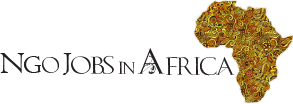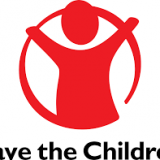Terms of Reference: On Investment in Children: Measuring child Protection and Education budgets in Puntland and Mogadishu
Background
For over 90 years, Save the Children has been making a difference in children’s lives in more than 120 countries. We are the world’s largest independent child rights organization, underpinned by a vision in a world in which every child attains the right to survival, protection, development and participation. Our mission to inspire breakthroughs in the way the world treats children, and to achieve immediate and lasting change in their lives.
The United Nations Convention on the Rights of the Child (UN CRC) in its Article 4 places an obligation on all governments, including the poorest, to make the most out of their resources in order to invest to the ‘maximum extent of their resources’ in children and to ensure that all local and national resources are well spent to bring about positive outcomes for children. Children’s rights remain hollow promises if they are not backed up by appropriate financial allocations and expenditures by the respective governments. . Governments have a core role in making public investments to the fulfilment of children’s rights and wellbeing as highlighted in the UN Committee on the Rights of the Child General Comment 19: Public Budgeting for the Realization of Children’s Rights.
Child Rights Governance is one of the five thematic areas of Save the Children Somalia/Somaliland (SCISOM) Country Office. One of the sub-thematic intervention in the CRG work is Investment in Children (IiC) focusing on child rights-based budgeting. Child rights-based budgeting consists of a critical element of analysing, measuring and tracking national budgets to determine whether sufficient resources are being allocated, and spent in sectors such as Education, Health and Protection which have a high impact on children’s lives.
Analysis of government budget is an effective tool for monitoring the implementation of child rights and for advocating with governments to provide adequate resources for children’s development.
To this end, one of the core programme deliverables of the CRG components under the Norad frame and BMZ projects is to measure budgets in the Education and Child Protection sectors. Therefore, this Terms of Reference (TOR) sets out the framework to recruit a consultancy firm to undertake this exercise.
Study objectives
The general objective of this study is aimed at improving government budget allocation on child protection and education sectors in Puntland State and Federal level, through generating data and evidence on the efficiency, effectiveness and equity of government allocation.
Specific objectives
- To conduct a comprehensive and comparative analysis of the adequacy, equitable, allocative efficiency and utilization of the education, protection and health budgets of Puntland.
- To investigate the revenue side of the budget focusing on education, health, and child protection and make recommendations for expanding the fiscal space
- To develop policy briefs and advocacy action plan based on the findings
Scope of study
- The study will be conducted in Mogadishu for Federal level and Garowe at Puntland
- The analysis will include both allocation / spending and revenue
Deliverables of the study
The study team are expected to accomplish the following:
- Identify existing policies in child protection, education, health and analyse or measure the governments commitment to implement the policies.
- Assess and analyse the amount of budget allocated (adequacy, equality, effectiveness and efficiency of of budget allocation) to the ministries of Education and Health as percentage of the GDP, and as a total of the public expenditure, and in relation to other selected sectors to be identified at a later stage.
- Analyse trends or percentage change in the government’s allocation and expenditure on primary education and health care since the year 2017.
- Analyze the revenue side of the secctors and measures to expand the fiscal space through domestic resource mobilization
- Make detailed analysis of the structure of the education and health budgets by looking into its internal distribution across programmes (early childhood development, primary, secondary, tetiary level , vocational skills trainings, , child health, maternal health) and further analyse budgets based on cost areas (such as capital and recurrent, salaries, overheads, teachers’ salaries etc).
- Assess and analyse the proportion of education and health budget that mostly benefit children (primary school children -such as text books, library, furniture, teachers training) and child health as percentage of administration costs.
- Analyse the impact of budgetary choices on specific groups such as disabled children, street children, children of minority groups, children in selected IDP camps.
- Assess and analyse the trends in changes in education and health situation of children.
- Identify, assess and analyze gaps in the transfer of budget to various levels of the education and health sector (regional, district and school levels)
- Identify key advocacy issues. An advocacy plan will be developed by SCISOM staff.
- Provide practical recommendations including how to implement the recommendations.
Key deliverable and tentive timeline
Deliverable / Milestones
Timeline
The study Team will submit an inception report including, Study objectives, scope and key study questions, description of the methodology, including design, data collection methods, sampling strategy, data sources, and study matrix against the key study questions
- data analysis and reporting plan
- caveats and limitations of study
- risks and mitigation plan
- ethical considerations including details on consent
- stakeholder and children communication and engagement plan
- key deliverables, responsibilities, and timelines
- resource requirements
- data collection tools (in line with the study matrix): 1 week after signing contract
Final data collection tools (in the report language):
- FGD guides
- Data collection mechanism: 1 week
An Interim Report / Power Point Presentation including a summary of findings from the study. The focus will be on:
- Summary of interim findings
- Any emerging program trends, issues or risks
- Any changes that have had to be made to the study design (if applicable)
- Key tasks for the next stage of the study and any proposed refinements or changes to methodology (if applicable): 2 weeks
A StudyReport (45 pages) including the following elements:
- Executive summary
- Background description of the Program and context relevant to the Study
- Scope and focus of the study
- Overview of the study methodology and data collection methods, including a study matrix
- Findings aligned to each of the key study questions/objectives
- Specific caveats or methodological limitations of the evaluation
- Conclusions outlining implications of the findings or learnings
- Recommendations
- Annexes (Study matrix study ToR, Inception Report, Study schedule, List of people involved)
A consolidated set of feedback from key stakeholders will be provided by Save The Children within 1 week of the submission of the draft report: 2 weeks
Final Study Report incorporating feedback from consultation on the Draft Study Report including Data and analyses including all encrypted raw data, databases and analysis outputs: 1 week
Scope of measuring and the Child Protection budget
Child protection work is complex and not clearly defined. This is because, violence, abuse, neglect and exploitation of children are entrenched within social, economic, political and cultural fabrics of societies. Violence against children happen in private and public settings and assume many different forms. Child protection policies, buddgets and interventions are usually scattered in various government ministries such as Labour and Social Affairs, Women Development and Family Affairs, Justice, Legal affairs, Education and Health. It is thereofre not the responsibility of one government department, but every government ministry and department to ensure that reasonable efforts are undertaken to ensure that children are protected from all forms of violence, abuse and neglect, based on the purview and mandate of each specific government department.
Child protection budget is defined as the sum total of all budgeted interventions, in any given area that directly contribute to the prevention and or response to abuse, exploitation, neglect and violence affecting children.
The key tasks in tracking the child protection budget includes mapping of government organisations including specific departments within ministries that work and allocate budget for the following CP interventions:
- Government departments such as children’s desks, national coordination mechansims or focal points that Coordinate child protection activities and coordinate and engage in child protection working groups (CPWGs).
- Child protection policy and law reform
- Institutions of care such as orphanages and child protection homes/centres
- Preventive and responsive child protection services (eg. family tracing, referal services)
- Training and capacity building of relevant public service professionals
- Public awareness raising in child protection
Methodology
A thorough analysis of government policies and programmes will be done before investigating the budget. The study will largely utilize use secondary data that inclused review of budget from Ministry of Finance,economic and Planning, progress reports, thematic studies and others. The study will also conduct KIIs to further deep dive and understand the budgets in relevant ministiries and other stakeholders
Duration of of the study
The study is expected to be completed within 45 working days commencing in September 2022, with the final report due no later than mid-December 2022. Hence, a clear assessment schedule will be developed and agreed with the lead consultant.
Administration and Logistics
Save the Children will provide all the necessary logistics needed for field visits and interviews. Save the Children is responsible for facilitating the review process through making available relevant documents and providing feedback to the consultant. A project group will be established to manage the consultancy, consisting of representatives from education Tas, CP/CRG TA and REALM Tas. This group will review and validate the draft report and engage in discussions with the consultant throughout the consultancy. The consultant is responsible for identifying potential assistants to support him/her where necessary.
Copyright and intellectual property rights
The title rights, copyrights, and all other rights of whatever nature in any materials used or generated under the provisions of this consultancy will exclusively be vested with Save the Children Somalia Country office. All products developed under this consultancy belong to Save the Children exclusively. Under no circumstances will the consultant use the information of this study for publication or dissemination to any individual or organization without official prior written permission from Save the Children Somalia Country office. The material can be used freely by Save the Children without any remuneration to the consultant.
Qualification and Experience
The consultant must have demonstrated skills, expertise, and experience in:
- Advanced university degree (Master’s degree) in education, social sciences, international development, public policy, economics or relevant fields.
- At least 7 years of relevant working experience with government social sector budget analysis, at national and sub-national levels
- Experience with collecting and working with complex financial data sets;
- Previous working experience in and knowledge of Somalia context.
- Previous work experience with Governmental Institutions or a IN/UN agency will be considered a strong asset.
- Experience in research in education and child protection an added value
- Demonstrated ability to communicate effectively with diverse stakeholders.
- Good analytical and writing skills.
- Good facilitation and presentation skills.
- Knowledge of survey administration, desk review, and field research on social issues.
- Ability to produce good quality reports within a short timeframe.
- Be flexible and responsive to changes and demands.
- Strong interpersonal skills and respect for cultural diversity
- Fluent in written and spoken English and Somali
Interested candidates shall submit their applications through [email protected] no later than 8th October 2022 at 5:00 PM (EAT Time)


